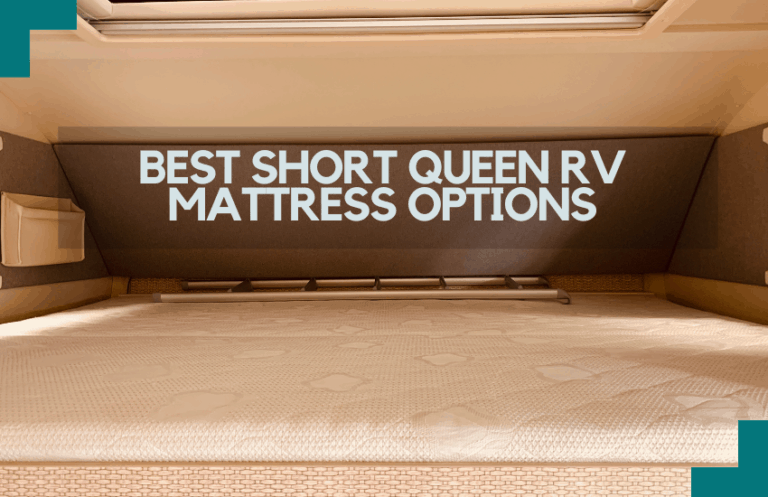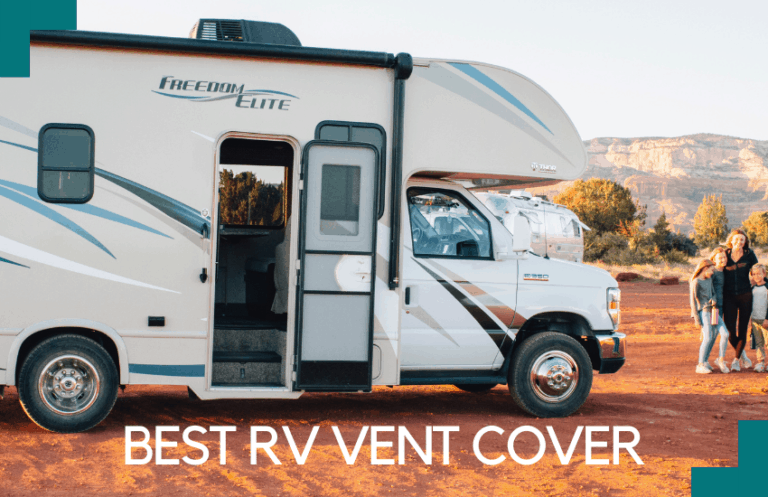7 Best Dehumidifiers for RV That Are Worth Your Money
- The Best Travel Trailers for Jeep Wrangler On The Market - September 15, 2022
- The Best Travel Trailers Under 4000 lbs for Your Next Trips - September 15, 2022
- Airstream vs Oliver Comparison: Which Is The Best? - September 15, 2022
In this guide, we will give you a comprehensive overview of the 7 options available today to help you decide which one you should buy.
can create a bunch of issues for your RV. A high can support the growth of molds and mildew due to , can compromise the integrity of the structure, and cause health hazards.
RVs in warm, humid climates need to have the possible installed to help remove any extra moisture in the air and protect your investment.
My Top Picks
Let’s have a quick look at the 7 best dehumidifiers for RVs available today and then go through some of the reasons you need a dehumidifier and what things should be considered when buying one to fight condensation and in the small room of your RV.
| Dehumidifier | Absorption Capacity | Auto Shutoff | Price |
| Eva-Dry Renewable Mini Humidifier | 6 ounces | No | Check out the latest price |
| Ivation IVADM45 Intelligent Dehumidifier | 25 ounces | Yes | Check out the latest price |
| Camco 44195 Fragrance-Free Mini Dehumidifier | 18 ounces | No | Check out the latest price |
| hOmeLabs Energy Star Dehumidifier | 800 ounces | Yes | Check out the latest price |
| Frigidaire 70-Pint Dehumidifier | 1120 ounces | Yes | Check out the latest price |
| Pro Breeze Electric Dehumidifier | 16 ounces | Yes | Check out the latest price |
| InvisiPure Hydrowave Dehumidifier | 27 ounces | Yes | Check out the latest price |
You won’t always have a sewer nearby when you’re out and about in your RV. Here are the best portable waste wagons for your RV in 2022.
Signs You Need A Dehumidifier Installed In Your RV
Humidity levels of 40% to 50% are considered safe and healthy for humans and equipment in the surroundings.
RVs are basically moving houses built on solid wooden planks to keep the house light. One of the main drawbacks of wood is that it catches mold very quickly in warm and humid weather and fires in cold and dry weather. At the moment, we are more concerned about the humid weather.
It is widespread for an RV to accumulate mold on the crooks and nooks of the floor and the ceiling. Molds tend to penetrate deep into the wood and compromise its structural integrity, hence keeping it at risk of collapsing and causing damage both physically and financially.
So to avoid all this commotion, I recommend buying a dehumidifier as soon as you purchase or build an RV to keep the investment with you for as long as possible with minimal hassles. This is especially true for people who live in the warmer parts of the world.
Dehumidifiers are also very helpful in maintaining the ambient temperature and environment inside the RV, which is essential when you’re sleeping in it.
So to avoid any structural damage and keep the RV comfortable from the inside or the, it is best to buy a dehumidifier. If you already have one, but it doesn’t do its job well, it is time to get a new one.
As an RVer, you realize the importance of consistent water pressure when you’re camping. Here’s our guide of the best RV water pressure regulators in the market today.
Things to Consider When Buying A Dehumidifier for Your RV

You should consider the following things before you buy a dehumidifier for your RV.
Tank Capacity
In this guide, we are looking for a space of 300 sq ft – 400 sq ft above the average cover area of an RV.
Tank capacity is the capacity in the dehumidifier to suck or extract from the air. Dehumidifiers usually turn themselves off when the tank has been filled completely. If you get a small dehumidifier with a larger area, you must constantly remove the tank to clear up space for constant operation. Even if you find the best small dehumidifier, it can be quite a task.
It is usually recommended to have a 64-ounce tank capacity for a 300 sq ft area, but that is a recommendation. Many RV owners opt for lower capacity to fit in small spaces, and some may opt for bigger dehumidifiers for constant and hassle-free operation.
But always buy the dehumidifier according to your space requirements. I recommend that you refer to the technical specs on the back of the box or ask an expert while buying one for size and operation.
Noise Output
The noise level in a dehumidifier is given out by three sources: the compressor, the exhaust, and the intake.
Having a quiet humidifier is always the preference for many RV owners so that they can sleep peacefully at night.
The compressors make the most noise in a dehumidifier, followed by the output fans. The sound of the output fan, however, is not as distracting as the compressor.
But all the sound issues are easy to fix if the compressor is quiet. The rest of the features in a dehumidifier can be controlled easily, like the fan sound and the vibrations. Increasing the distance between you and the dehumidifier can also reduce the sounds.
I would recommend having a live test of the dehumidifier you plan to buy to see what noise levels you are comfortable with.
Energy Usage
Energy usage is another important factor one must consider before buying a dehumidifier. Adding another electrical appliance to the already loaded RV battery requires careful consideration. You need to be mindful of not overloading the battery and draining it before even having a chance to charge it.
So take my advice when I say to buy a dehumidifier which can set a 24-hour cycle. As the relative humidity level changes throughout the day, you can program the dehumidifier to work less when the humidity has lowered and vice versa.
Dehumidifiers come in all shapes and sizes, but it will all depend on your requirements and the power output your RV can offer. Lucky for you, many models today come with low energy output if you are always on the go.
Installation
Today you can easily buy a plug and play models of dehumidifiers. All you have to do is identify a place to install the dehumidifier, plug it in using your desired energy source, and start operation. All the settings and specifications can be altered depending on your requirements.
Some models also come with a drain hose outlet too. This will add a little work to your installation for placing the drainpipe, but it’s going to be a one-time thing only.
Other models come with a tank capacity that has to be emptied as soon as it gets full or stops functioning. In many cases, the models with drain pipes are preferred to models with a tank capacity.
But in my view, both models have their benefits in the long run, and your choice should depend on your circumstances and preference.
Cost
The cost of a dehumidifier can vary from a hundred dollars to a few thousand dollars. It all depends on the use of the dehumidifier and its output.
In my opinion, you should always choose the best for your RV, comparing price, durability, and performance.
Make sure to set your budget right because the number of options will play with your decision-making skills. It is an important accessory for an RV, so buy the best one for your vehicle.
Auto Setting
While this is a no-brainer, there are dehumidifiers available today that make it a lot easier for you to maintain ambient humidity levels without requiring a lot of work. I recommend you to go for a dehumidifier with automatic settings so that you won’t have to monitor its operation constantly.
Trying to maneuver your RV in tight spaces can be a hassle. Thankfully, we’ve got you covered. Check out our list of the best wireless backup cameras available in 2021!
The 7 Best Dehumidifiers for RVs
Now that we’ve covered the reasons for getting a dehumidifier and what to look for, let’s have a thorough look at the 5 best dehumidifiers for RVs.
Eva-Dry Renewable Mini Dehumidifier

If you require a compact dehumidifier, the Eva-Dry Renewable mini dehumidifier is the go-to option. It can absorb up to six ounces of water before requiring a recharge.
If you have a big RV, I would recommend getting a regular-sized dehumidifier. However, if space is not the issue, then having a few of these installed around your RV will give the best results. You can place them in the closet, in the shower, and in the RV pantry for best results.
The Eva-Dry dehumidifier is recommended to be installed in an area of 333 cubic feet. Depending on the humidity levels in your area, these dehumidifiers can last you anywhere between 20 and 30 days before running out of charge.
What I love the most about this dehumidifier is that it is 100% renewable and very eco-friendly. It is also non-toxic and safe for children and pets in the RV.
Unlike most dehumidifiers, the Eva-Dry has an automatic shutdown feature. It shuts down when it reaches its capacity to avoid any spillage.
Installing this dehumidifier is also super simple. Just plug into the wall unit and wait until the internal pellets turn clear yellow.
Pros
- 100% renewable and eco-friendly
- Non-toxic and safe for children and pets
- Auto-shutdown feature and no spillage
- Minimal electric requirements and can be used wirelessly
Cons
- It has no blinking lights to alert if the dehumidifier has switched itself off.
- It is small in size and capacity. Not ideal for large RVs
Ivation IVADM45 Intelligent Dehumidifier

Next in line is the Ivation IVADM45, a modern dehumidifier that does not use any compressors or motors. It is operated on the Peltier’s model, which causes a temperature difference in the environment resulting in better dehumidification.
This is the latest and most technologically advanced way to rid your RV of humidity without getting more technical. This method does not require any motors, pumps, fluids, or gases to carry out the job, making it super quiet.
No compressor in the unit also comes with a drawback; it is only well suited for a small space of 100 square feet or less. As the average length of an RV is more than 10 feet, you will need to require two units of the IVADM45 to carry out the job successfully.
The Ivation IVADM45 is less than 14 inches in height and 9 inches wide, making it fit any space within an RV.
It is capable of clearing up to 25 ounces of liquid from the surroundings per day. The automatic sensor will alert you once it is full by flashing the indicator light and shutting off the unit.
One more advantage of having this dehumidifier is that you can set your preferred level or the desired level of relative humidity, and the unit will work it out for you.
Pros
- The use of no compressors, pumps and motors increases energy efficiency.
- Compact in size
- Has an auto humidistat to maintain the relative humidity according to the user’s preference
- Quiet operation
Cons
- Need at least 2 units in an average-sized RV
- The new technology has had some complaints with the Peltier system as it overestimates the work it can do
Camco 44195 Fragrance-Free Mini Dehumidifier

The Camco 44195 mini dehumidifier is the cheapest option on this list but claims to absorb up to 3 times its weight in water.
The dehumidifier weighs just 6 ounces and absorbs just under 18 ounces of water peruse. That said, it will have to be replaced after one use, making it non-renewable.
That is not a lot of water that’s sucked out of the air. So if you’re living in a place where it gets humid around the summer, this should do the job. But if you live in really humid environments, this is not an ideal option.
It’s definitely a great portable dehumidifier to have, but if you care about the environment, it sure will increase the carbon footprint. That said, it does not have to be plugged into the battery of your RV.
One more drawback of the Camco 44195 is that it uses toxic chemical substances to suck moisture out of the air, making it difficult to store around children and pets. Overall, it’s a decent option to have if you use your RV less frequently.
Pros
- Cheapest dehumidifier available on the market
- Decent capacity to contain moisture
- No set up required; just place it anywhere in the RV
Cons
- Non-renewable
- Uses toxic substances to remove moisture from the air
- Not the safest to keep around children and pets
hOmeLabs Energy Star Dehumidifier

One of the best dehumidifiers in the market for regular RVers is the hOmeLabs Energy Star dehumidifier. It is designed to be used in a large setting and can remove up to 50 pints of water daily. It has a huge water tank of 1.8 gallons and is designed to fit almost anywhere in the RV.
The Energy Star features an automatic shut-off setting. The setting can be easily updated to your specific needs. You don’t have to worry about changing settings every day as it runs its 24-hour cycle and adjusts to your preferences.
The dehumidifier turns off automatically after reaching the capacity of the water tank. If you are too lazy to empty the tank regularly, you can buy one with a pump to remove the excess fluids whenever necessary.
The hOmeLabs Energy Star dehumidifier operates very quietly. It guarantees not to disturb one’s sleep and doesn’t distract when it turns off.
Pros
- Large water tank
- Automatic shut off feature
- Compact design to fit in any RV
- Very quiet operation
Cons
- The drain hose is sold separately
- It uses a fair amount of power from the RV battery.
Frigidaire 70-Pint Dehumidifier

The Frigidaire 70-Pint Dehumidifier is a great option with a large water tank and impressive 70-pints of water removal from the air. It can also be set up near a suitable drain to drain the water directly, making it hassle-free to operate and clean.
The dehumidifier can be set to a custom 24-hour cycle. The fact it does not have to run all day long can help you maximize its efficiency.
The Frigidaire 70-Pint Dehumidifier comes with an automatic shut-off feature which shuts off as soon as the water tank is full to avoid any spillage if you are not around.
It can also be operated at a low 41-degree Fahrenheit to reduce power usage.
The unit has a digital display that shows the humidity conditions in the environment it is set up in, in this case, the RV, for suitable comparison from in and out conditions.
The unit is about 2 feet in height and is 15 inches wide. It’s bigger than the options we’ve covered in the list, and if size and aesthetics are not a problem, this is a great option for regular use.
Pros
- Large capacity removing up to 70 pints a day and also has a drain pipe
- Custom cycle for easy operation and energy efficiency
- Digital readout console for comparing in and out readings
Cons
- Large in size
- Not a very impressive design
Pro Breeze Electric Dehumidifier

Pro Breeze Electric Dehumidifier is a great option that’s quiet, compact, and can manage and dehumidify an area of 120 sq.ft. It uses a thermoelectric cooling technology which means there is no need for a compressor, making its operations extremely quiet.
The Pro Breeze dehumidifier removes about 9 ounces of water daily and is perfect for a small RV. It also has an auto shut-off feature that activates when the water is filled. It also means less monitoring and hassle.
One drawback is that the device does not operate in temperatures below 41 degrees Fahrenheit, so that’s something to keep in mind. Overall, it’s a great dehumidifier that’s compact in size and works efficiently without making any sounds.
Pros
- Thermoelectric technology makes it extremely quiet
- Very efficient, as no need to power a noisy compressor
- Compact in size
- Auto shutoff feature for less monitoring
Cons
- Does not work in temperature less than 41° F
InvisiPure Hydrowave Dehumidifier

One more highly rated dehumidifier I came across is the InvisiPure Hydrowave. InvisiPure Hydrowave can protect smaller areas ranging anywhere from homes, garages, offices, and RVs. It features the Peltier dehumidification technology, which is the most modern dehumidifying technology in the market.
It gets rid of almost 27 ounces of water from the air daily. It has a fairly decent-sized water tank, and a drainage outlet also comes along with the dehumidifier if you want a permanent solution in your RV. There is also a shut-off feature in the InvisiPure Hydrowave when the tank is full and needs to be emptied.
Overall, the unit is of good build quality and works very efficiently, making it a reliable dehumidifier for a mid-sized RV.
The only drawback I find in the unit is that the drain hose is not included, and no instructions come along with the unit’s installation. It is usually plugged and play, but a little settings overview can always be helpful for new users.
Pros
- It comes with a drainage outlet
- Automatic shut off feature
- Versatile in usage and can be used in many kinds of spaces
- Successfully prevent allergens in the air
Cons
- Does not include a drain hose along with the unit.
- A small water tank of 2 liters
Did you know that you can take tax deductions when you’re traveling with your RV? I know, tax is probably on the bottom of your list of things to talk about your RV. We’ve covered the top tax deductions that you should know about to make it easier for you.
Frequently Asked Questions
Question: Why is a dehumidifier necessary for an RV?
Answer: An RV dehumidifier removes any excess moisture in the environment, making for a comfortable living experience in an RV. It also helps reduce the growth of molds, helping improve the longevity and integrity of the wooden structure. So you can say a dehumidifier helps in maintaining your investment.
Question: What is the best place to drain a dehumidifier’s tank?
Answer: It entirely depends on your preference. The water in a dehumidifier contains all the bacteria in the atmosphere of your RV. It is better to empty the tank in a nearby water drain or to let it into the forest or green area next to where your RV is parked.
If you plan to attach a hose to the dehumidifier, make sure it is emptied out in the shower area. Please do not insert the drain pipe into the grey water tank as dehumidifiers tend to suck bacteria in from the outlet, too, when settings are slightly changed.
Question: Where should the dehumidifier be placed in an RV?
Answer: A dehumidifier should be placed in an open area for it to cover most of the RV. If you have a small dehumidifier, then it depends on their number and technical specifications. For example, if you have a dehumidifier suitable for 300 cubic feet, it is recommended to install them in high moisture areas. And if you own a relatively large dehumidifier, you can place it in the back of the RV or your living space to cover all the area properly.
Question: What is the ideal relative humidity setting in an RV?
Answer: Ideally, the relative humidity in an RV should range from 40% to 50%. You will only know about the relative humidity levels in your RV if you have a smart humidistat function or humidity measuring gadget to manually tweak the settings on your dehumidifier.
Since plumbing is a major part of living in an RV, here is our essential guide to RV plumbing that will make your experience a lot better!
What Is the Best Dehumidifier for An RV?
Ensuring your RV is moisture and humidity-free is paramount, and for that, you need a good dehumidifier.
All the dehumidifiers I’ve listed offer something for different types of RVs and users. If you are looking for something cheap and don’t really use your RV often, the Campco 44195 dehumidifier is a budget-friendly option for short excursions.
If you are looking for a top-of-the-line, modern RV dehumidifier that takes the guesswork out of your life, then the hOmeLabs Energy Star takes the cake.
For me, the best dehumidifier is one that does its job without requiring constant monitoring, and that’s what I like about the Frigidaire 70-Pint Dehumidifier. This RV dehumidifier needs to be placed and set up once, and it does its job well.
In the end, it all comes down to your personal preference and budget. I hope this guide helped you find the best dehumidifier for your needs. If there’s one thing that you should take away from this, it’s that your RV really needs a good dehumidifier.



![How to Find the Best RV Toilet [Guide]](https://rvpioneers.com/wp-content/uploads/2019/08/How-to-Find-the-Best-RV-Toilet-768x432.png)




